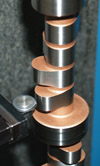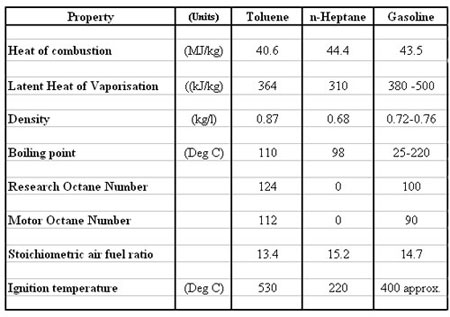Alternative fuels
 I guess you could say that the first decade of the 21st century, in the world of motor sport at least, were the years of the alternative fuels. Diesel (yes, we're talking motor sports here), bio-ethanol, RME (rape methyl esters) and even CNG (compressed natural gas) have all been used during the decade for one kind of motor racing or another but there was one type of alternative fuel going back to the eighties and which didn't quite make the headlines, for obvious reasons - and that was toluene. C7H8 to give it its chemical formula or methyl benzene as it is sometimes also known, was quite often blended into fuels to give them just that little bit of extra 'zip' during the Formula One turbo years as an alternative to some of the more usual hydrocarbons around at the time. Coming under the general classification of aromatics, toluene could be quite readily found in small quantities in normal service station pump gasoline. Indeed it still can be although limited to amounts of less than 1% by European statute. But in the eighties in the search for more and more performance out of the then turbo Formula One engines, suppliers were looking towards fuels that had a higher resistance to detonation at the higher intake pressure boost levels that were common during the period. At the time the FIA regulations covering Formula One were by today's standards, very lax. Specifying that it should be a 'pump' fuel (whatever that is) and have a maximum research octane (RON) rating of 102, any fuel which satisfied these requirements could in theory at least be used. With a blending RON of 124 and MON (Motor Octane Number) of 112 blending together with a substance, n-heptane (RON =0, MON=0) could produce a mixture that fell just below the 102RON limit.
I guess you could say that the first decade of the 21st century, in the world of motor sport at least, were the years of the alternative fuels. Diesel (yes, we're talking motor sports here), bio-ethanol, RME (rape methyl esters) and even CNG (compressed natural gas) have all been used during the decade for one kind of motor racing or another but there was one type of alternative fuel going back to the eighties and which didn't quite make the headlines, for obvious reasons - and that was toluene. C7H8 to give it its chemical formula or methyl benzene as it is sometimes also known, was quite often blended into fuels to give them just that little bit of extra 'zip' during the Formula One turbo years as an alternative to some of the more usual hydrocarbons around at the time. Coming under the general classification of aromatics, toluene could be quite readily found in small quantities in normal service station pump gasoline. Indeed it still can be although limited to amounts of less than 1% by European statute. But in the eighties in the search for more and more performance out of the then turbo Formula One engines, suppliers were looking towards fuels that had a higher resistance to detonation at the higher intake pressure boost levels that were common during the period. At the time the FIA regulations covering Formula One were by today's standards, very lax. Specifying that it should be a 'pump' fuel (whatever that is) and have a maximum research octane (RON) rating of 102, any fuel which satisfied these requirements could in theory at least be used. With a blending RON of 124 and MON (Motor Octane Number) of 112 blending together with a substance, n-heptane (RON =0, MON=0) could produce a mixture that fell just below the 102RON limit.

However it is as well to remember that the conditions in the combustion chamber of the CFR engine, that rather old and some might say antiquated unit used to evaluate both RON and MON, are totally different to that in a racing engine. This CFR engine, designed in the1930s, runs at 600 rpm for RON testing and a mind numbing 900 rpm for the MON test procedure. Any readers thinking that a fuel in an engine running at 10,000 rpm plus will behave in a similar way is perhaps rather optimistic. As it is a mixture of 84% toluene supplemented with 14% n-Heptane while producing the test results comparable to a more normal 102 RON fuel, is so much more resistant to detonation in the combustion chamber of a high speed racing engine. Anyone involved in the blending of fuels for racing will surely be aware of this. For the rest of us, the sight of a Formula One car powering out of the old chicane at Silverstone with a rooster tail of a plume of black smoke emanating from the exhaust pipe will be a sight we will never forget! 1500 bhp out of a 1½ litre engine running at 5 bar boost was really something! However non PC it may be, that's my kind of alternative fuel!
Fig. 1 - Fuel comparison.
Written by John Coxon